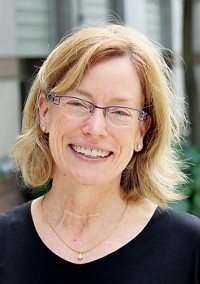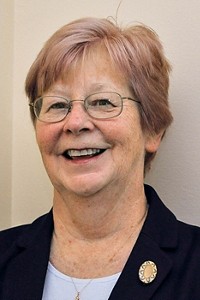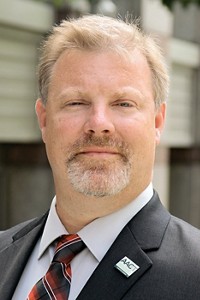Advertisement
Grab your lab coat. Let's get started
Welcome!
Welcome!
Create an account below to get 6 C&EN articles per month, receive newsletters and more - all free.
It seems this is your first time logging in online. Please enter the following information to continue.
As an ACS member you automatically get access to this site. All we need is few more details to create your reading experience.
Not you? Sign in with a different account.
Not you? Sign in with a different account.
ERROR 1
ERROR 1
ERROR 2
ERROR 2
ERROR 2
ERROR 2
ERROR 2
Password and Confirm password must match.
If you have an ACS member number, please enter it here so we can link this account to your membership. (optional)
ERROR 2
ACS values your privacy. By submitting your information, you are gaining access to C&EN and subscribing to our weekly newsletter. We use the information you provide to make your reading experience better, and we will never sell your data to third party members.
Careers
Time To AACT: Announcing The American Association Of Chemistry Teachers
by
Andy Jorgensen, Chair, Society Committee on Education
,
Donald J. Wink, chair, Division of Chemical Education
September 1, 2014
| A version of this story appeared in
Volume 92, Issue 35
In chemistry, as in other fields of study, the presence of a highly qualified teacher has been demonstrated to be the single most important factor affecting student outcomes.
Today, we are proud to announce the launch of the American Association of Chemistry Teachers (AACT), which complements existing initiatives to fulfill the American Chemical Society’s goal of providing the “most innovative, relevant, and effective chemistry education in the world” and underscores the contributions of K–12 teachers.
Launching under the auspices of ACS, AACT is the first and only national membership organization by and for K–12 teachers of chemistry. It offers specialized chemistry teaching resources such as lesson plans, demonstrations, and multimedia including animations to help students visualize complex chemical phenomena. Other benefits include a subscription to Chemistry Solutions, an online peer-reviewed journal about teaching chemistry in the K–12 classroom; a subscription to ChemMatters, the award-winning magazine that demystifies everyday chemistry; and professional development opportunities.
As a membership association, AACT also provides teachers with a community of peers that is the strongest form of support a professional can have. Through AACT, members can meet teachers of chemistry at all grade levels from around the U.S. and ask questions, share strategies, find support, and overcome challenges with the help of colleagues who have shared a similar experience.
In short, AACT will help teachers of chemistry share, connect, and succeed.
Why AACT Now?
The challenges facing the U.S. in science education are well documented. In the most recent National Assessment of Educational Progress (NAEP), only 34% of students in fourth grade, 30% of students in eighth grade, and 21% of students in 12th grade were found to be “proficient” or better in science.
In addition, studies by the National Science Foundation show that the number of students enrolling in high school chemistry has increased by more than 10% in the past decade. Yet, according to the Department of Education, only 35% of high school chemistry teachers both have a bachelor’s degree in chemistry and are certified to teach the subject.
Considering these trends together, we believe that supporting K–12 teachers of chemistry through a dedicated membership association is the most efficient and scalable solution. Complementing the work of the Society Committee on Education (SOCED), the Division of Chemical Education (DivCHED), and the ACS Education Division, AACT is designed to support new and experienced teachers of chemistry across the country.
We join our SOCED and DivCHED predecessors in endorsing AACT as a solution to long-standing challenges associated with engaging K–12 chemistry teachers, who impact students during formative periods in their scholastic development.
History
The creation of AACT is the result of extensive groundwork conducted over the past five years. In 2009, a Board-Presidential Task Force on Education was asked the question: What can the world’s largest scientific society uniquely do to transform U.S. science education? Among its recommendations was to explore the formation of a K–12 association of chemistry teachers.
This led to the creation of a joint task force convened by SOCED and DivCHED in 2011 to explore the potential of such an organization under the auspices of ACS. This, in turn, led to the creation of an advisory board appointed by SOCED and DivCHED in 2013 to guide the development of a framework for AACT. After much discussion, market research, and planning, AACT was approved by the ACS Board of Directors at the ACS national meeting in Indianapolis in September 2013.
Get Involved
AACT membership is separate from ACS membership but open to all with an interest in chemistry education. It is our hope that ACS members will sponsor AACT events, connect with AACT members, encourage interested members of the chemistry education community to join, and catalyze the growth of the AACT community by spreading the word on social media and in their local communities.
To learn more about how to get involved with AACT, including how you can join and how your local section can sponsor membership for teachers in your area, please visit teachchemistry.org.
Special Thanks
Many people contributed to the formation of AACT. Although we unfortunately cannot list them all, we would like to especially thank the following people who have been so instrumental in making AACT a reality: ACS Board of Directors member George M. Bodner; ACS Past-Presidents Thomas H. Lane and Catherine T. (Katie) Hunt; AACT advisory board chair and 2001 James Bryant Conant Award winner Barbara P. Sitzman; and chair of the joint SOCED and DivCHED task force that first explored the possibility of creating AACT, Susan C. Nurrenbern.
Views expressed on this page are those of the authors and not necessarily those of ACS.







Join the conversation
Contact the reporter
Submit a Letter to the Editor for publication
Engage with us on Twitter